Back to blog
Transport Tips – Money saving ideas for getting around Tokyo

Is it your first time visiting Tokyo? Then you probably have questions about how to get around.
Over the course of your stay travel costs can add up, especially if you mean to see all Tokyo has to offer.
So what’s the most cost-efficient way to get around the city? Here are some things to know about transportation in Tokyo that can save you time and money.
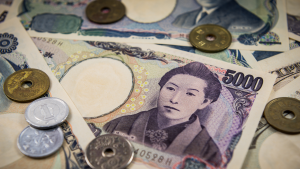
Cash
The first thing to know about Japan is that cash is king. There are few places in the country where foreign credit or debit cards are accepted. The good news is that most convenient stores have ATMs that can turn your plastic into paper. Everywhere in Tokyo will accept the Japanese Yen as payment. In many places, it is the only accepted form of payment.
So, make sure you have some on you before you arrive or withdraw some at the airport. We recommend the former option. Converting currency at the airport can have a hefty convenience fee.
Trains, skyliners, and subways
The rail lines in Japan have renown for their efficiency, timeliness, and cleanliness. You have several options for getting a ticket and boarding. There are single trip passes and two-way passes, as well as all day passes. These costs can range from 100¥ to 700¥.
You can buy the ticket from many pay stations that line the walls of the building. You can find these for use right before the admittance gate. These ticket stations always have the option for English menus, and you can pay in cash.
Skyliner tickets will name a boarding time, as well as a car and seat assignment on the ticket. So first try to find where the car you will be riding in is stopping. If you are in a rush and have to board a random car to make it on, don’t worry. The cars are all connected so you can make your way back to the appropriate spot.
Subway tickets are less particular about when you get on or where you sit. If you don’t want to rush for the train and are fine waiting five minutes for the next one, you can skip it. For these tickets, you need to board at the station you bought the ticket at and exit at the station you paid for.
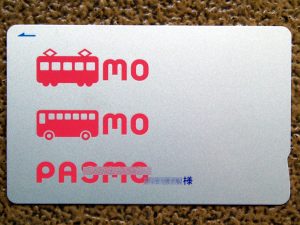
“#1346 Pasmo card” by Nemo’s great uncle is licensed under CC BY-NC-SA 2.0
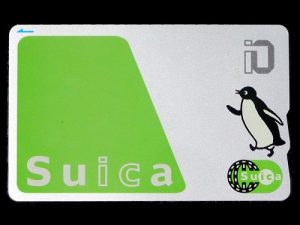
“#105 Suica rechargeable IO (イオ) card for JR East” by Nemo’s great uncle is licensed under CC BY-NC-SA 2.0
Payment Cards
Should you be planning on a longer stay, there are a few ways you can save yourself time and money. If there is a place in Tokyo which you visit on a regular basis then signing up for a commuter may be right for you. This is great if you have a job or go to a university in the city.
These passes generally halve the cost of a specific route, but you must order them for either one, three, or six month periods. Then, as long as you take the same line to work (including the same transfers), you will get a discount on every trip made.
You can continue to pay cash for every trip. If you don’t want to wait in line at the ticket machines every day then there is a better way. You can buy two different NFC cards in Japan, PASMO and SUICA. These are rechargeable cash cards you can load with up to 20,000¥ and swipe at the admittance gates.
It costs only 500¥ to get one, and you can recharge them at their respective spots on the wall of ticket stations. They save you money, time, and the hassle of keeping track of your ticket. You can buy them at both Narita and Haneda airports.
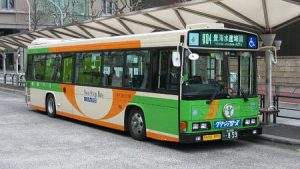
Buses
The next public transport option to be aware of are the bus routes in Tokyo. Toei Transportation company owns and runs the buses in Tokyo. They are a usually (but not always) a flat rate of 210¥. Some bus stops are larger and actually have seating. Most are a small signpost on the side of the street, so be on the lookout for them.
First, check to see where the bus route goes. You board the bus at the front, drop your payment in, and have a seat. If you have a PASMO card, you can use to pay for your ride for 206¥ . Be aware that buses won’t stop unless signaled to do so, or if they see somebody waiting at the waiting point. Look for the stop button and press it when you hear your destination called. For a more in depth guide to traveling by bus, visit Toei’s website here.
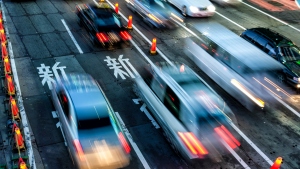
Taxis
The taxis in Japan are world class. If you’re taking one, it is again worth noting that they will usually only accept cash as payment. Most taxi drivers do not speak English, so take precautions beforehand. The best practice is to know the address (in Japanese) and have it written down or on your phone to show to the driver.
Some taxi companies have apps into which you can put your credit card information. From these, you can digitally hail your ride. You will have your cost deducted when you reach your destination. Japantaxi is one such app that can be useful for those who want an quick transport option. It is available both in the AppStore and on Google Play.
As convenient as taxis are, they are going to be one of the more expensive options available to you. Ride costs start at 480¥ and then add on about 450¥/km, with some variance across taxi services. This means that for a 10km trip you’re looking at paying out ~4,980¥ or ~$46.00 USD (based on conversion rates at the time of writing this article).
Another advantage with taxis is that they operate all hours of the day and night. So if you have missed the last train home, know that you don’t have to be stuck until the following morning. One final note on paying for taxis: do not tip the driver. Tipping is not a common practice in Japan, and they can interpret it as being at best odd and at worst rude. It may feel strange if you come from a culture where the practice is normal, but don’t feel bad about not giving extra for services while in Tokyo.
Do you plan on taking pictures to document your time in Japan? Learn how to ask permission to snap that perfect shot in Japanese by clicking here.

